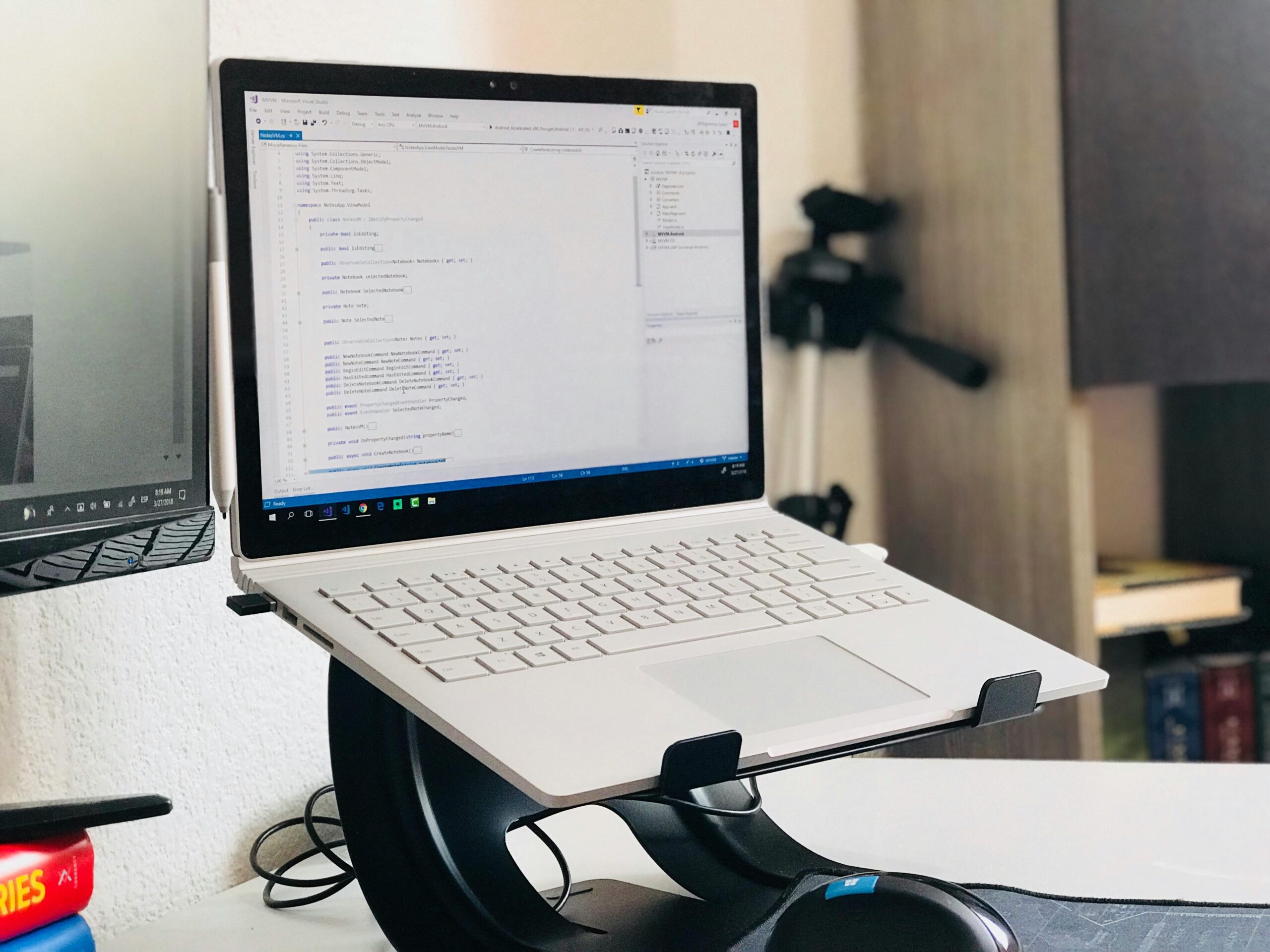How often did you go like this: you gave the project a few months, finally launched your React application in production, and then started to receive the first complaints? «Slows down when switching between sections», «Search glitches», «News feed is updated by half a minute».
The root of these problems is almost always data. More precisely, the current architecture’s inability to deliver them effectively, manage them, and, crucially, intelligently cache them.
We are way past the point where you could just drop fetch requests into useEffect and consider it done. Modern users expect native application speed in the browser. Social Media, Marketers, FinTech – any application claiming serious scale rests on two key technological pillars: GraphQL and advanced caching strategies.
GraphQL is not just a fashionable replacement for REST. It is a completely different philosophy of interaction with the backend, where the customer exactly requests only those data that he needs, and only in the right form. But it’s only half the solution. The other half is what you do with this data on a GraphQL clients. This is no longer a simple localStorage or basic React Query cache. We’re talking about normalized Apollo Client cashes that eliminate status duplication, optimistic UI updates that create a sense of instant response, and multi-layered strategies using Redis on backend.
It is the depth of work with this React + GraphQL + Caching and separates startups that take off from those who take off because of poor performance.
We weren’t just looking for companies that know how to use React. We were looking for those who, at the level of architecture, solve the most complex data and speed problems. Below is a selection of teams that prove in practice that the powerful interface and impeccable user experience are the result of a good choice of technologies and expertise in their application. Let’s see who really speeds up the bill.
Why this bundle is the new gold standard

Let’s make it simple. Building an interface on React today is not even half the job. It’s like bringing a bunch of perfect, ready-made bricks (your components) to the construction site and understanding that there is no cement, no drawings, how to fasten them. Data is the same cement. And this is where magic begins, and more often pain.
We used to carry this «cement» with RESTful API wheels. Familiar scenario: we configure useEffect, drag the endpoints, then send the answer, measure data from different sources, process errors for each request separately… The code is growing, and with it the number of problems. Over-fetching (when the server gives extra fields), under-fetching (when one request was not enough and you have to make the next) and this eternal struggle for relevance of data between components.
GraphQL came and said: «Guys, enough is enough». It’s pretty damn elegant: you tell the server exactly what data you need, in what form, and get it in one request. Frontend has ceased to be a disenfranchised consumer and has become the full-fledged dictator of his data. Do you only need the name of the user and the avatar for the sitar? No problem, let’s not drag together all the history of his orders. It is not just convenient – it fundamentally changes the logic of interaction with the backend.
But this is not enough. You can have the fastest GraphQL server in the world, but if every client is going to jerk it on any sneeze, we’ll just move the bottle neck. Any click, any jump will be pinned to the network request and wait for a response. The user will see spinners where he could see content.
Here comes advanced caching. And I’m not talking about localStorage. I’m talking about what became possible with clients like Apollo or Relay.
Imagine:
- The user entered the card of the product, the data went into the cache.
- It’s back in the list of goods – the data is no longer loaded, but instantly pulled out of the cache.
- He sent a comment – the interface instantly (optimistically) shows the result without waiting for the server’s response, creating an illusion of incredible speed.
- The application works offline because it already has some data to work with.
Cache is no longer just a repository of strings. In Apollo Client, for example, it’s normalized. It’s like a smart database on the client. It does not just save the responses from the server, but it folds the objects by type and ID. And when you request the same object in another query (for example, from the same user), the client already knows where to get it without making any unnecessary requests.
So this is the dream-bond:
- React is a predictable and fast UI.
- GraphQL is efficient and accurate data-fetching.
- Advanced cache – instant work with data on client.
They complement each other perfectly, creating the same seamless and incredibly responsive user experience that has become a new quality standard. This is no longer just a trend, it’s a pragmatic choice for those who build faster complex and highly loaded applications.
Rating companies: From strong to better
Here’s how we see this top. I’ll tell you right away – everyone here is a strong player, but everyone has their own specialization and their own superpower. We placed them not just for the sake of it, but by how deep they are buried in the React + GraphQL + Caching bundle to solve real, not educational tasks.
8th place: This Dot Labs – Fans of open-source and architectural purity
These guys are not so much a studio as a brain trust. Their main feature is that they write and customize the tools that everyone then uses. Do you want to use Apollo Client not for documentation, but for some wild custom keying scheme? Or do you want to use the hybrid GraphQL and RxJS for reactive data streams? Here they are in their element.
What catches the eye: Their blog and reports are ready-made guyds to solve the most unusual productivity problems. You take them – not just to make a site, but to build an ideal, scalable architecture for years to come. But keep in mind, their approach is often overkill for a standard commercial project.
7th place: Cleverpath – Enterprise Stability Experts
If your project is not a startup, but a big, complicated corporate monster with lots of legacies, then look in their direction. They are not just waving at the client kesh. Their power is in building a multi-level system of caching between front and back. Redis, Memcached, invalids Kesha for events from Bacenda – this is their bread.
What sticks: They understand that the main thing in enterprise is not to drop anything and that the data is always consistent. Their caching is about reliability and fault tolerance, not only about speed. For fintech or heavy SaaS – what you need.
6th place: Evil Martians – Optimizers up to the last milliseconds
The Martians are a separate caste. They do not follow standard paths. If everyone uses the Apollo Client out of the box, they will go and tie it up under the hood, and also the GraphQL server to give the data perfectly prepared for the cache. They loathe inefficiency and brand everything.
What sticks: They will squeeze all the juice out of your app. Real cases are when they came into the project and shortened the API response time by just fixing N+1 problems in reverbs or applying Persisted Queries. Take them when performance is the main KPI and all other methods are already exhausted.
5th place: Mercury Development – Master of the Complete Cycle
Their key advantage is that they close the whole stack. They write both backend on GraphQL and frontend on React. This takes a lot of trouble. It is not necessary to long and compulsorily coordinate with the banks of the scheme of api – they themselves designed and implemented. Do you want Kesh to be disabled by cunning business rules? No problem, they on the server side can generate the event exactly as you need it on the client.
What sticks: One team – one person in charge. Great option for building a product from scratch where you need complete synchronization between what happens on the server and how it is displayed and cached on the client.
4th place: Netguru – User experience guru
These guys look at caching not as a technical tool, but as a tool to improve UX. Their goal is to be optimistic. Remember when you read a post on the social network, and it turns red at once, and then it goes to the server? That’s their job. They skillfully use a cache to make the application feel instantaneous, even if the network is jammed.
What catches the eye: An ideal choice for customer-oriented applications (e-commerce, marketplaces, social networks) where the smoothness and responsiveness of the interface is directly converted into money and loyalty.
3rd place: Alibaba Travels – Experts in integration and work with legacy
Honestly, not all projects are green fields. More often it is: «we have a giant monolith on REST, rewrite expensive, but you need to attach to it modern React-application». Here are these guys, and they show up. Their strength is to gently stretch the GraphQL layer on the old API without breaking it, while organizing the caching so that it works with this legacy.
Catchy: Invaluable experience working in large corporations with complex processes. They understand how to introduce new technologies without breaking down established production.
2nd place: Dashbouquet – Problem solvers with data
They don’t take generic projects. Their stuff is dashboards, analytics systems and any interface where you have to work with tons of data in real time. Imagine you need to display stock quotes or statistics from thousands of IoT devices. Their approach to caching is not about hiding data, but about managing its flows. They are skilled at working with GraphQL Subscriptions and disability cache for ever-changing data.
What to grab: If you have a data-intensive application – dare to take them. They know how to make the data fly even in the most complex scenarios.
1st place: Celadonsoft – Strategists for high-volume products
Well, here, I think, no options. The guys from Celadon team are guys who do not think in technology stacks, but in architecture and business tasks. They don’t just use the cache. They design a whole ecosystem for data.
Their approach is a multi-level defense:
- On client: Deep knowledge of the normalized cache in Apollo Client. They will not allow data to be duplicated in the repository and will build a disability scheme so that the data is always up-to-date.
- On the GraphQL server: They have since the project designed schematics so that they are cashier friendly – eliminate N+1, debug queries, use Persisted Queries for security and performance.
- Deeper: They are not afraid of caching both at the CDN level, and in Redis to unload databases on peak loads.
They understand that proper caching is not about making it faster, but about reducing infrastructure costs, resiliency and ultimately a better user experience. They have specific cases where they cut response time and load on servers for highly loaded applications. So they come first – they think as architects and as engineers in charge of business metrics.

Conclusion: How to choose a partner?
So, well, with the theory and list sorted. Now the main question: who to write in the end? How to make the right choice when everyone is so smart and on GraphQL have eaten a dog?
Here’s my opinion, without water. Look not at the beautiful words in the portfolio, but at how the company thinks. Your choice should focus on one simple thing: what exactly is the problem that you are in pain right now.
- You have a startup at the stage of idea or prototype, and need to quickly and properly lay the groundwork? Your option is guys like This Dot Labs. Their relationship to the Ossorsis is an insurance against outdated decisions and a guarantee that they will bring fresh, community-tested practices into the project. It’s like hiring an architect to help write the building codes.
- You already have a legacy-monster on backend (Java, .NET, PHP) and you want to rig it with a fast and modern React interface without rewriting everything? Then you need integrators. Their strength is not in the pure shell, but in the ability to find a common language between the old backend and the new frontend through the GraphQL layer. They know how to make the cache properly disabled when you change your old API.
- What if you’re all about performance and scale? If your application has to hold thousands of simultaneous connections and you give the user an instant feed (as in trading or social networks)? You need heavy artillery here. You need a company that looks at caching not as one library in React, but as an entire multi-level architecture – from the client through GraphQL server to Redis and CDN.
And here, I think, Celadonsoft is one of the most reliable choices. Why? Because they think exactly in these categories. They will not just poke Redux or React Query, they will ask: What do you have on your database? How often do the data change? Which reading scenarios prevail?». They will propose a strategy, not just the installation of a package. It’s the partner you need when your scalability and resiliency is not a whim, but a business requirement.
Summary: Do not look for the «best company in the world». Look for the most suitable for your particular stage and your specific problems. Listen to their architects at the conference – if they dig deep, into the issues of disability, data consistency and load on the backend, you are on the right track.






